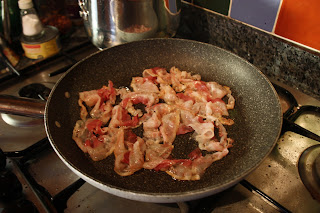One of my great inspirations in life is music. It comforts me, energises me, calms me, and speaks to my soul. How strange vibrations of air can have such an effect, I don't know, but gratefully accept.
I am quite partial to reggae music of the 1970s, and in particular dub. Dub records started life as pared down reworkings of hit songs with the vocal tracks removed, designed to be used at dances to keep people moving in a rhythm for up to half an hour at a time. Not as artistically valued as the original song, but useful for entertainment at sound system parties.
Eventually, however, through the artistry of some of the top producers such as King Tubby and Lee Perry they became legendary; sonically wide canvases with thumping bass and superb sound effects. Some even sound like you are listening to them underwater! If you were to listen to just one classic dub album as a result of this post, let it be Garvey's Ghost by Burning Spear, which is the dub companion to their classic Marcus Garvey album (both totally worth your hard earned – guaranteed!).
Although much of Lee Perry's Black Ark output of the mid 70s is worth listening to; my favourite is the Super Ape album, which if you happen to buy has 'Croaking Lizard' on it, which is Prince Jazzbo and the Upsetter's 'version' of Chase The Devil by Max Romeo. (Anyone who researches this may find a certain popular dance act from the 1990s totally ripped it off!)
Anyway, coming back the point I was intending to make, these dub records were often called 'Versions'. I reckon you could say Mark Ronson got the idea for the title of his debut album from this idea. My thought is that any recipe can be endlessly remixed, twiddled and re-arranged to produce amazing and interesting 'versions', just in the spirit of those sonic duppy conquerors.
Some time ago I posted my take on Leon restaurant's Superfood salad, in itself a 'version', which can be found here: http://snigskitchen.blogspot.com/2011/06/more-use-for-butternut-squash-snigdhas.html Well, since then, I've revisited the idea and come up with a new 'version'. Remixed without the feta cheese (which Him Indoors is not so keen on) and having tweaked the superfood mix to include purpletastic beetroot, this is another healthy but tasty midweek supper salad or a take-to-work lunchtime dish (layer up and do not dress if doing so). It is a meal in one.
I also substituted quinoa with a grain mix made by Pedon which cooks in 10 minutes. I found it on my wanders round Tescos, but am convinced is available elsewhere. This is a partially cooked mixture of 5 different grains, which is broken down by the body slowly to release its energy.
(Serves 2)
Ingredients:
Fresh mint leaves, 1 handful, roughly chopped
Fresh coriander leaves, 1 handful, roughly chopped
Fresh rocket leaves, 1 handful
Frozen or fresh peas, about 1 small mug full
3 spring onions, cut into 1” slices
Broccoli florets, quarter of a head, cut into florets
Cauliflower florets, quarter of a head, cut into florets
Cooked beetroot, about half, finely sliced
Half a cooked Butternut squash, cut into bite sized cubes
50g multi grain mix
Topping ingredients:
Pancetta (optional), about 75g cubetti de pancetta
Sunflower seeds, 1 tablespoon
Pumpkin seeds, 1 tablespoon
Sesame seeds, 1 tablespoon
Dressing ingredients:
Olive oil, about 2-3 tablespoons
1 Lemon - juiced
Method
- Cook the butternut squash as per my instructions in my previous post: http://snigskitchen.blogspot.com/2011/06/how-to-roast-butternut-squash.html
- Then cook the multi grain mix. First put the kettle on. You aren't making much, so use the smallest pan you have. Cover the multi grain mix with boiling water and boil for 10 mins. Drain, rinse with cold water, drain again and spread out on a dry plate to lose some excess moisture and ensure the grain cools down.
- Now cook your broccoli, cauliflower and peas. You can steam or boil them. I do them in the same pan, boiling the broccoli and cauliflower in plenty water for 5 mins and then adding the peas for the final minute. Drain and rinse in cold water. Take the cauliflower florets out and save separately.
- If you are having the pancetta, dry fry in a pan until thoroughly cooked.
- You will see the pancetta slices are going brown around the edges. Remove from the pan and place on kitchen roll on a plate to absorb any excess fat.
- Now cook the seed topping. Heat a small pan until warm. Add the seeds. Cook for 2-3 mins, stirring as you go to achieve even colour. When some of the seeds start popping, turn the heat off straight away and transfer to a bowl.
- Whisk up the dressing with fork in a mug. Keep until needed.
- Now layer up the salad. Boiled veg first. This will be followed by cooked grain and salad.
- Now add the cauliflower, spring onions, squash, beetroot and herbs.
- Add the Pancetta (if using).
- Re-whisk your dressing and drizzle all over.
- Now add the seed topping.
- Serve immediately and enjoy!














































